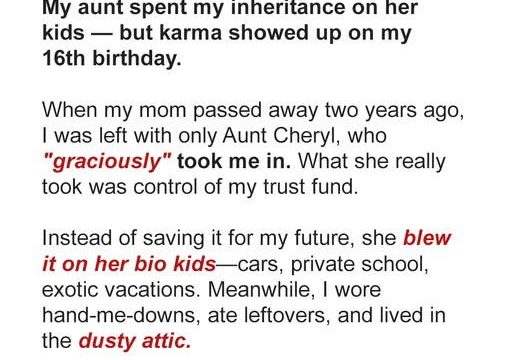When it comes to protecting your home from natural disasters, sometimes the most unconventional solutions turn out to be the most effective. One Texan homeowner, Randy Wagner, became a local legend after he took a bold and unusual approach to safeguard his property from an impending flood. While his neighbors laughed at his unconventional method, Randy had the last laugh when his plan worked flawlessly, proving that ingenuity and determination can outshine skepticism.

For those living in flood-prone regions, the damage caused by rising waters is an all-too-familiar nightmare. In Texas, where severe storms and flash floods are a recurring issue, homeowners are no strangers to the devastating impact these events can have. Floods don’t just damage property—they disrupt lives, drain financial resources, and leave lasting emotional scars. For Randy, the threat of a catastrophic flood was enough to push him into action, but instead of relying on traditional sandbags or makeshift barriers, he decided to think outside the box.
It all began when meteorologists delivered a grim forecast predicting widespread flooding in Randy’s area. The news sent chills down his spine as he imagined the damage floodwaters could cause to his home. Knowing that water damage could rack up costs exceeding $150,000, Randy realized he needed a plan—and fast. While others scrambled to prepare their homes with conventional methods, Randy began researching alternative solutions. What he found was an idea so unconventional that most people would dismiss it as absurd: a plastic water barrier.
The concept was simple in theory but ambitious in execution. The plan required creating an impenetrable perimeter around his house using heavy-duty plastic material. It wasn’t a cheap endeavor either. The project set Randy back a hefty $9,000—a sum that many would balk at, especially for something as unfamiliar and untested as a plastic barrier. But Randy did the math: $9,000 was a small price to pay compared to the financial ruin flood damage could bring. He took the plunge, trusting his research and his gut instinct.
With the supplies purchased, Randy got to work. The barrier required over 125 meters of thick, industrial-grade plastic to completely wrap around his home. The setup had to be precise, with every inch of the plastic sealed tightly to ensure no water could seep through. It was backbreaking work, and all the while, Randy’s neighbors watched from their porches. Some shook their heads in disbelief, others laughed outright, and a few offered polite yet skeptical words of encouragement. To them, Randy’s plastic fortress looked like a ridiculous science experiment rather than a flood prevention method.
But Randy wasn’t focused on their opinions—he was focused on his goal. As storm clouds rolled in and the rain began to fall, his barrier faced its ultimate test. Water levels rose rapidly, swallowing nearby yards and creeping toward homes. Many of his neighbors began frantically piling sandbags and pumping water, but the flood showed no mercy. Meanwhile, at Randy’s house, something incredible was happening: the water stopped at the barrier.
Despite the overwhelming pressure from the rising floodwaters, Randy’s plastic barrier held firm. It acted like a fortress wall, keeping the water out and his home dry. While neighboring houses suffered extensive damage and homeowners faced the daunting task of cleanup and costly repairs, Randy’s home remained untouched. The laughter that had once surrounded his efforts turned into stunned silence, and eventually, admiration. His neighbors were left speechless by the success of his plan, and Randy couldn’t help but smile at the outcome.
Randy’s story is more than just an example of a successful flood-prevention strategy—it’s a lesson in innovation, resilience, and preparedness. Floods are unpredictable, and in many cases, traditional solutions aren’t enough. Randy showed that sometimes the boldest ideas, even the ones that might initially seem laughable, can yield the best results. His willingness to invest time, money, and effort into a solution no one else would have considered ultimately paid off in a big way.
Beyond the immediate success of his plastic barrier, Randy’s story highlights an important truth: being prepared isn’t just about following the crowd—it’s about finding what works. Too often, people dismiss creative ideas because they don’t align with conventional wisdom. But as Randy proved, thinking outside the box can be the difference between disaster and triumph.
Flood preparedness doesn’t always come in the form of sandbags or temporary levees. Sometimes, it’s about recognizing the risks, doing your homework, and having the courage to act, even when others are laughing at you. Randy’s plastic barrier wasn’t just a practical success; it was a testament to the power of determination and resourcefulness.
For homeowners in flood-prone areas, Randy’s story serves as both inspiration and encouragement. Whether you’re in Texas or any other region vulnerable to flooding, his experience is a powerful reminder that preparation is everything. Natural disasters may be unavoidable, but their consequences can often be mitigated with the right mindset and a willingness to take action.
In the end, Randy Wagner wasn’t just a homeowner protecting his property—he became a symbol of ingenuity and resilience. The next time storm clouds gather and flood warnings light up your phone screen, remember Randy’s story. While others doubted him, he stayed focused. While others laughed, he kept working. And when the waters rose, he stood safe, dry, and victorious behind his unconventional but remarkably effective plastic fortress. Sometimes, the best ideas come wrapped in plastic—and a little bit of laughter never hurts, especially when you’re the one laughing last.





